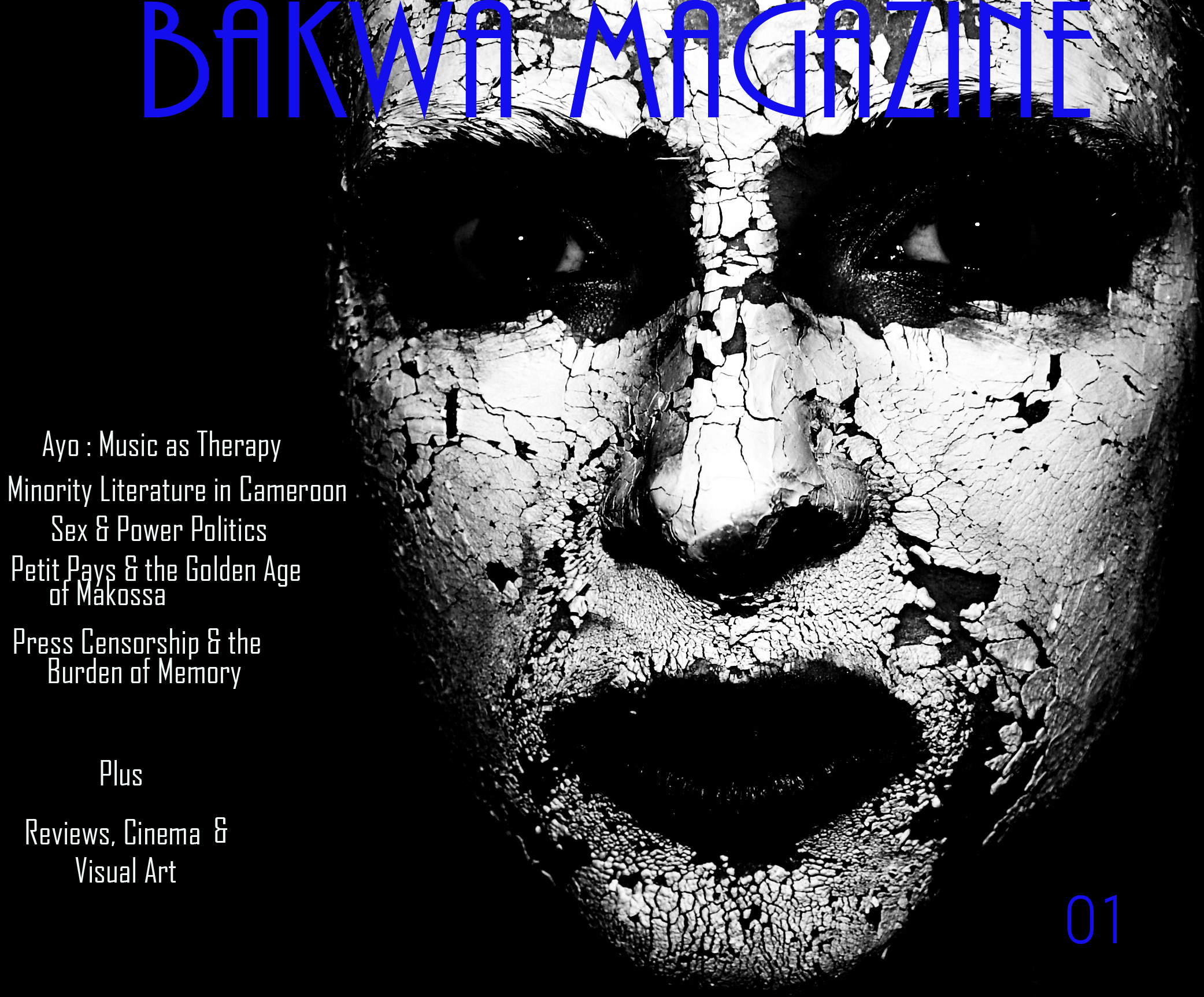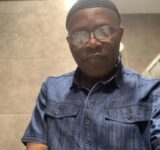Adebiyi Olusolape
Ani mi Gogo Layi
Ma ige be
Ma ige ke
Ma ige po ji Gogo Layi
Aganza e ri ige, e la ivo la
Esobi ni ifo e dan e ayegbon
Aba na kyu ‘du, wa gan ‘za!
Those are the words of a Kakanda folksong which we received in an email, sometime in April of last year. Like the texture of a precious stone which one turns over and over in delight, the words rolled off my tongue pleasantly even though I did not know how to pronounce them correctly or what they meant.
I did know what they mean. The poet and activist, Gimba Kakanda, who sent us the folksong had furnished the translation below:
Song of Aunt Layi
I prepared a meal
I dished out a meal
I offered a dish to Aunt Layi
A visitor who ate must carry the dish
O behold a kid gawking
Storm is coming, vanish!
“The Kakanda are a riverine people largely found on the banks of River Niger in Niger and Kogi States. Although often classified by historians as a sub-tribe of the sister ethnic group, Nupe, Kakanda is a linguistically distinct member of the Niger-Congo family. Accounts of Kakanda life and culture are featured in the narratives of early explorers like Captain William Allen, William Balfour Baikie and Bishop Samuel Ajayi Crowther.” Mr. Kakanda also provided that brief explanatory paragraph.
We received all of this at the time when we were collecting material for an anthology of Nigerian minority folklore, which was published in January of this year as a chapbook, The Ways of Nigerian Folk.
The motivation for publishing such an anthology was to challenge the insidious narrative which reduces Nigeria’s story to the “emplotment” of the socio-political careers of three central characters, the so-called “three major tribes,” a phrase as risible as it is sad, not because it is false but because its truth “hides the fact that there is none.”
Some of the questions we put, first to ourselves, the publishers of the anthology, and to our readers turned on trying to learn whether being Nigerian was no more than a game of numbers and population size. The answers, when they came, would humble us, teaching us more than we expected we would ever learn.
For instance, Mr. Kakanda informed me that he was not aware, apart from our anthology, of any instance of the publication of literature in the Kakanda language. This was no claim of little consequence. Even now, I am yet to accept it. The horror of what it suggests is enough to make the mind cringe. Contemplating one of the cultural outcomes of the historical and structural processes that are always at work, in post-independence Nigeria, to institutionalize the hegemony of the Igbo, Hausa and Yoruba was most distasteful.
In my bid to falsify Mr. Kakanda’s disturbing claim, hoping against hope, I have since learned, from a linguist, of the existence of Kakanda linguistic data, a collection of words from that language. This new piece of information corroborated a fact implied in Mr. Kakanda’s brief, introductory note, for some process of linguistic knowledge production must have preceded the assertion that Kakanda belongs to the Niger-Congo family of languages.
However, and without being too simplistic, such linguistic data, probably transcripts of recorded speech, does not qualify as “literature.” Looking past that near imperceptible nod of obscure, academic acknowledgement, I am still engaged in the search for literature in Kakanda.
Where might one find the crucial evidence in such a case as this one? One could be lucky and unearth some forgotten, out-of-print book that collected folklore, sacred texts, social history or traditional poetry in the language with or without translations. In that latter case, without translation, one would have to be doubly lucky to recognize one’s find were one to be so lucky as to happen upon the thing in the first place.
Rarer still was the out-of-print work of original creativity in an indigenous language, say a novel, collection of short stories, plays, poetry or a translation of some celebrated text from English or Arabic. I am still hoping my luck will turn and that I will find something in a public or private library.
Again, I am yet toassay the national archives or the National Institute for Nigerian Languages, in Abia State, and that rekindles my hopes. Surely, in those places one is bound to find some Kakanda literature, of any sort, absolutely any sort, just to prove that the beautiful folksong published in The Ways of Nigerian Folk is not the only piece of Kakanda literature in existence.
Usually, one may expect to find some literature of a non-secular nature, printed religious material, usually bibles or portions of it, hymns or other types of song, composed in or translated into an indigenous language. However, I drew a blank on Kakanda in the databases I have so far had access to and all in the other places in which I have looked.
Apart from history texts or travel books, ancient and modern, another direction in which one could direct one’s search was anthropological literature. Even if the linguistic content of such writings are in some cases no more than nominal, such dew drops become an ocean to the thirsty.
A text of anthropology on the Yorubas had made a passing reference to the Kakanda, describing them as a Yoruba sub-group. Mr. Kakanda had himself pointed me to another classic of anthropology which highlighted the political processes of assimilation that were actively at work to subsume Kakanda into Nupe.
What was clear from the descriptions of the power relations between Kakanda and her Nigerian sisters was that she was in danger of being killed, buried in an unnamed grave, to be forgotten, with her children and inheritance fought over by her sisters. Again, a common notion in the southern parts of the country is the one held by the conveniently parochial and the ill-informed, that anything from points north of the southern banks of the Niger or Benue rivers is Hausa.
Current linguistic scholarship holds that Nigeria is the home of at least 514 extant languages. Only by some defective mathematics would anyone decide that a measly three languages could effectively represent such plenitude. If there is at least one of those 514 languages which has yet to be published it is important to ask ourselves harder questions.
When would be a good time to launch sustained efforts to continuously translate all our national documents into all our indigenous languages, as part of an active process of deepening our democracy?
When would be a good time to leverage our diversity and create those much needed jobs, in research and in teaching at the tertiary, secondary and primary levels of education: creating institutes of language and cultural research and training; making mandatory the learning, by schoolchildren, of some other Nigerian language apart from their mother tongues?
Nigeria is a wide and deep place. I do not suppose that our experience with publishing ethnic minority literature or my personal search for literature in Kakanda should be read as characterizing the Nigerian experience—we do not know enough to conclude that.
In any case, what is really important is the directing of popular attention to the work of the facilitators who have done some work, publishing ethnic minority literature, in the past, are doing some work currently and activities that will foster the emergence of more facilitators.
There is a need for many more volunteers and culture enthusiasts to engage in the activities of creating original work in indigenous languages, to participate in translation projects and in the publishing and dissemination of literature in the languages of Nigeria’s ethnic minorities.
Adebiyi Olusolape is Poetry Editor of Saraba Magazine. The Ways of Nigerian Folk can be downloaded for free by visiting www.sarabamag.com and going to the “Chapbook” section.







A welcome contribution on the ongoing dialogue on Language/Literature Death/Endangerment. Profound thoughts, Biyi.
Nice one, Adebiyi. African literature should not be allowed fade out, especially those of the minority tribes.
Weldone!